INTERVIEWS
The Ethos of Irony: An Interview with Lee Konstantinou
Lee Konstantinou’s new book approaches postwar literature, politics, culture, and counterculture through the lens of the ironic worldview, pioneered by hipsters, punks, believers, and the cool alike.
Interviewed by Dylan Hicks
The Nightboat Interviews
In eight interviews featuring authors published by Nightboat Books, Andy Fitch offers a comprehensive oral history of the diverse output of this decade old press.
Paula Cisewski • Juliet Patterson
George Albon • Michael Heller
Douglas A. Martin • Martha Ronk
Lytton Smith • Jonathan Weinert
Interviewing the Interviewer: A Conversation with Andy Fitch
To conclude our special section of Nightboat Interviews, we turn the spotlight on interviewer Andy Fitch to find out what drives him toward oral history projects. Interviewed by Caleb Beckwith
My Year Zero: An Interview with Rachel Gold
Enter the world of Rachel Gold's latest novel, which tackles the subjects of mental health, dating, making mistakes, being a young artist, and writing your own story. Interviewed by Steph Burt
COMICS REVIEWS:
Paper Girls, Volume 1
Brian K. Vaughn & Cliff Chiang
Strange goings on in a Cleveland suburb capture the attention of four paper delivery girls in this riveting graphic novel. Reviewed by Amelia Basol
ART REVIEWS
Matthias Buchinger: "The Greatest German Living"
Ricky Jay
Esteemed collector and magician Ricky Jay chronicles his obsession with the Little Man of Nuremberg, illustrated profusely with ornamental and wildly detailed micrographic works. Reviewed by Jeff Alford
FROM THE ARCHIVES
Broken Hierarchies: Poems 1952-2012
Geoffrey Hill
With the recent passing of Hill, whom many consider Britain’s finest poet, we bring this review of his selected poems online to celebrate his work. Reviewed by Adam Tavel
Chapbook Reviews
Black Movie
Danez Smith
Smith’s Black Movie is a cinematic tour-de-force that lets poetry vie with film for which medium can most effectively articulate the experience of Black America. Reviewed by Mary Austin Speaker
POETRY REVIEWS
Firewood and Ashes: New and Selected Poems by Ben Howard
Geis by Caitríona O'Reilly
Two collections of poems take on Ireland—one by Iowan Ben Howard, obsessed with the Green Isle, and the other by Irish poet O’Reilly, whose work is influenced by American poets. Reviewed by M. G. Stephens
Ventriloquy
Athena Kildegaard
Kildegaard’s latest volume of poems expand out from the garden to saints, divination, and ultimately to the universe. Reviewed by Heidi Czerwiec
Night Sky with Exit Wounds
Ocean Vuong
With an expert blend of the tender and the destructive, Vuong shows himself to be a master of the lyric moment. Reviewed by J.G. McClure
Histories of the Future Perfect
Ellen Kombiyil
Kombiyil uses boundaries as launch pads to careen from one galactic experience to the other, occasionally returning to the ground. Reviewed by Samantak Bhadra
Orphans
Joan Cusack Handler
This heartfelt collection of poems is an extended elegy to Joan Cusack Handler’s parents, who were Catholic immigrants from Ireland. Reviewed by James Naiden
Justice
Tomaž Šalamun
Šalamun’s posthumous collection is drawn from unpublished works and other collections, showing his seminal humor and fearlessness. Reviewed by John Bradley
Literature for Nonhumans
Gabriel Gudding
Gudding offers a “zoopoetics” that explores an empire defined by agri-industry and the slaughterhouse. Reviewed by Garin Cycholl
Extracting the Stone of Madness: Poems 1962 – 1972
Alejandra Pizarnik
This collection of poems by a powerful Argentinian voice peels back the skin of darkness to reveal an exploration of death, the wonders of childhood, and the heavy chains of imagination. Reviewed by George Kalamaras
FICTION REVIEWS
My Escapee
Corinna Vallianatos
The women who populate the stories in this prize-winning collection are bound together by a common desire to escape. Reviewed by Shane Joaquin Jimenez
Kuntalini
Tamara Faith Berger
Number 7 in the Unlimited New Lover series, Kuntalini follows erotic adventures in yoga class. Reviewed by Corwin Ericson
Eleven Hours
Pamela Erens
In her latest novel, Erens unpacks the fearful anticipations of becoming a mother and the painful process of losing one. Reviewed by Lori Feathers
My Name is Lucy Barton
Elizabeth Strout
Strout touches on themes of family and memory, poverty and superiority, loneliness and identity, providing a down-to-earth reflection on real life grace, searching, and the irreversibility of life. Reviewed by Emily Myers
We Could Be Beautiful
Swan Huntley
Huntley spins a spellbinding novel that explores wealth, trust, and the tumultuous nature of familial relationships. Reviewed by Rebecca Clark
Cities I’ve Never Lived In
Sara Majka
Majka’s debut novel follows the narrator, a women re-evaluating her life after a divorce, in a dream-like prose that blurs the line between memory and fact. Reviewed by Montana Mosby
YA FICTION REVIEWS
Lady Midnight
Cassandra Clare
In the first Shadowhunters novel, Clare engages with an enthralling plot, witty humor, romance, mystery, and plot twists that will have the reader gasping out loud. Reviewed by Jessica Port
NONFICTION REVIEWS
Germany: A Science Fiction
Laurence A. Rickels
Rickels traces the resurgence of German Romanticism in postwar Californian SF writing, as evidenced by Heinlein, Pynchon, and Dick. Reviewed by Andrew Marzoni
Real Artists Have Day Jobs (And Other Awesome Things They Don’t Teach You in School)
Sara Benincasa
Comedian Benincasa’s new book offers 52 chapters with life advice as told through deeply personal narratives. Reviewed by Christian Corpora
You Are A Complete Disappointment: A Triumphant Memoir of Failed Expectations
Mike Edison
Edison's humorous memoir unfolds into a heart-wrenching narrative of the author’s journey to make peace with his childhood, forgive his father, and find worth within himself. Reviewed by Bridget Simpson
We Believe the Children: A Moral Panic in the 1980s
Richard Beck
Beck writes about the Satanic Panic of the 1980s and its outlandish tales of child abuse, many of which were linked to accounts of bizarre devil-worshipping rituals. Reviewed by Spencer Dew
Six Capitals, or Can Accountants Save the Planet?
Jane Gleeson-White
Gleeson-White’s new book reports on cutting edge ideas in accounting with a keen and strongly critical eye. Reviewed by Robert M Keefe
Farthest Field: An Indian Story of the Second World War
Raghu Karnad
Karnad’s astonishing history casts the Indians who served the British Empire in Iraq during World War II in a prestigious role. Reviewed by Mukund Belliappa
Every Song Ever
Ben Ratliff
Ratliff’s book is a series of graceful music-appreciation essays designed for listeners evolving into a species inundated with thousands of kinds of music across culture, region, and history. Reviewed by Dylan Hicks
Satellites in the High Country: Searching for the Wild in the Age of Man
Jason Mark
Journalist and back country explorer Jason Mark argues that not only is the wild relevant, we need it now more than ever. Reviewed by Eliza Murphy
Pure Act: The Uncommon Life of Robert Lax
Michael N. McGregor
Inspiring and thought-provoking, this biography follows the unconventional life of an experimental poet who pursued life, faith, and art with authenticity. Reviewed by Linda Lappin
A Mother’s Reckoning: Living in the Aftermath of Tragedy
Sue Klebold
Klebold’s book is a sometimes obsessive investigation into the suicidal depression that her son Dylan hid from almost everyone—until he and his friend shot to death twelve students, a teacher, and themselves at Columbine High School. Reviewed by Jason Zencka
Surrealism, Science Fiction, and Comics
Edited by Gavin Parkinson
Gavin Parkinson is on a mission is to establish academic scholarship on Surrealism’s link to science fiction and to comics. Reviewed by Laura Winton
Rain Taxi Online Edition Summer 2016 | © Rain Taxi, Inc. 2016
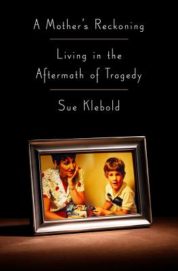 Sue Klebold
Sue Klebold
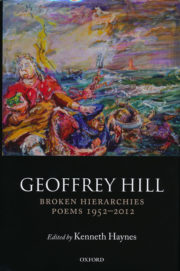
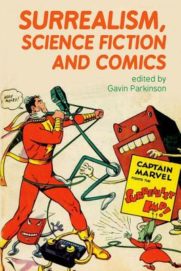

 Islam is a religion of peace. You’ve heard this idea before, and you’ve probably heard it said exactly like that. The reason these words are so familiar in the cultural conversation is because they so often need repeating in the face of bigotry; too often, Islam finds itself in the crosshairs of xenophobic scapegoating. More than any other group in 21st-century America, ordinary Muslim Americans get characterized by the terrible acts of extremists who inhabit their ideology.
Islam is a religion of peace. You’ve heard this idea before, and you’ve probably heard it said exactly like that. The reason these words are so familiar in the cultural conversation is because they so often need repeating in the face of bigotry; too often, Islam finds itself in the crosshairs of xenophobic scapegoating. More than any other group in 21st-century America, ordinary Muslim Americans get characterized by the terrible acts of extremists who inhabit their ideology. Scandinavia isn’t that big. Its defining feature might be that it’s a Separate Entity, in terms of its geography, culture, and presence on the global political stage. They speak their own languages, three of the four countries have their own currency, and they’re not even that popular of tourist destinations, when compared to locales throughout the rest of Europe and the world. But to Americans, particularly the ones making decisions about how the country is run, Scandinavia has a strange theoretical presence as either a utopia or a moral worst-case scenario.
Scandinavia isn’t that big. Its defining feature might be that it’s a Separate Entity, in terms of its geography, culture, and presence on the global political stage. They speak their own languages, three of the four countries have their own currency, and they’re not even that popular of tourist destinations, when compared to locales throughout the rest of Europe and the world. But to Americans, particularly the ones making decisions about how the country is run, Scandinavia has a strange theoretical presence as either a utopia or a moral worst-case scenario.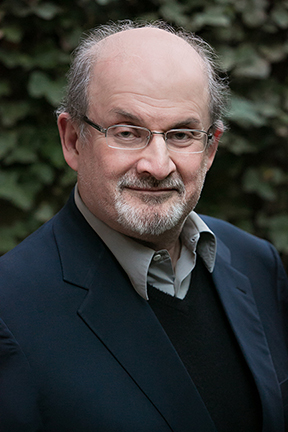

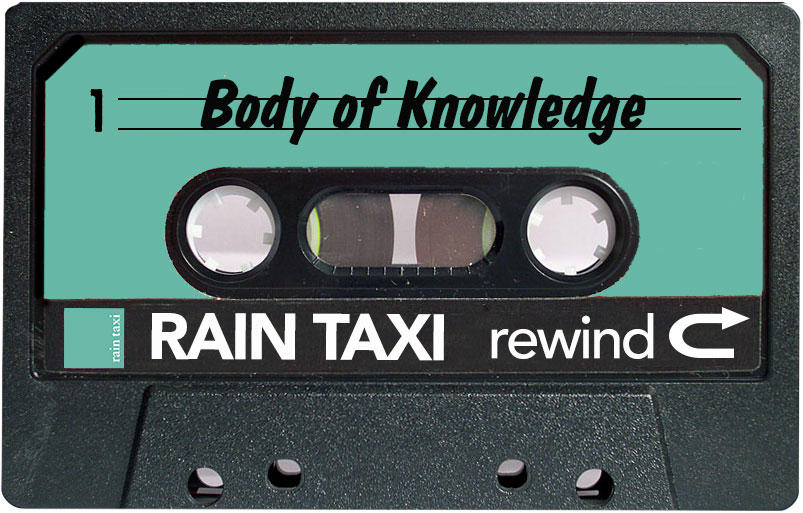 There is nothing you know as much about as your own body. To say you “know about it” is actually too much distance between you and it; we are our bodies, no matter how separate or at odds with them we sometimes feel. It’s interesting, then, how the body remains one of the great puzzles in all of human thought and science. Medicine, theology, literature, biology, sociology, even math: there are people in every field who have made a lifetime out of just trying to figure out what in the world we actually are, how we’re put together, and why. Think about it: isn’t this just a complicated version of staring at a mirror?
There is nothing you know as much about as your own body. To say you “know about it” is actually too much distance between you and it; we are our bodies, no matter how separate or at odds with them we sometimes feel. It’s interesting, then, how the body remains one of the great puzzles in all of human thought and science. Medicine, theology, literature, biology, sociology, even math: there are people in every field who have made a lifetime out of just trying to figure out what in the world we actually are, how we’re put together, and why. Think about it: isn’t this just a complicated version of staring at a mirror?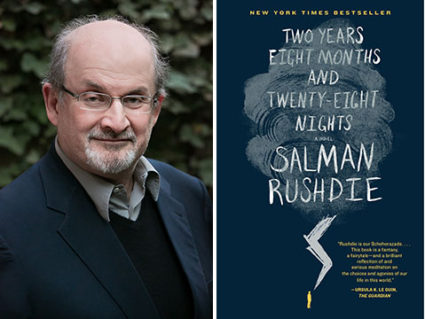
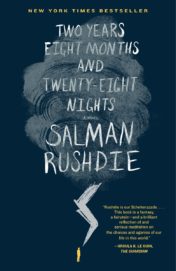 After writing his memoir and a children’s novel, Two Years Eight Months and Twenty-Eight Nights (less precisely 1001 nights) is Rushdie’s first adult novel in 7 years. Inspired by ancient, traditional “wonder tales” of the East, yet rooted in the concerns of the present, Rushdie’s novel blends history, mythology, and a timeless love story into a tale about the way we live now—an age of unreason. Satirical and bawdy, full of cunning and folly, rivalries and betrayals, kismet and karma, rapture and redemption, this story is quintessential Rushdie, a perfect mix of clever and fun, provocative and brilliant.
After writing his memoir and a children’s novel, Two Years Eight Months and Twenty-Eight Nights (less precisely 1001 nights) is Rushdie’s first adult novel in 7 years. Inspired by ancient, traditional “wonder tales” of the East, yet rooted in the concerns of the present, Rushdie’s novel blends history, mythology, and a timeless love story into a tale about the way we live now—an age of unreason. Satirical and bawdy, full of cunning and folly, rivalries and betrayals, kismet and karma, rapture and redemption, this story is quintessential Rushdie, a perfect mix of clever and fun, provocative and brilliant.